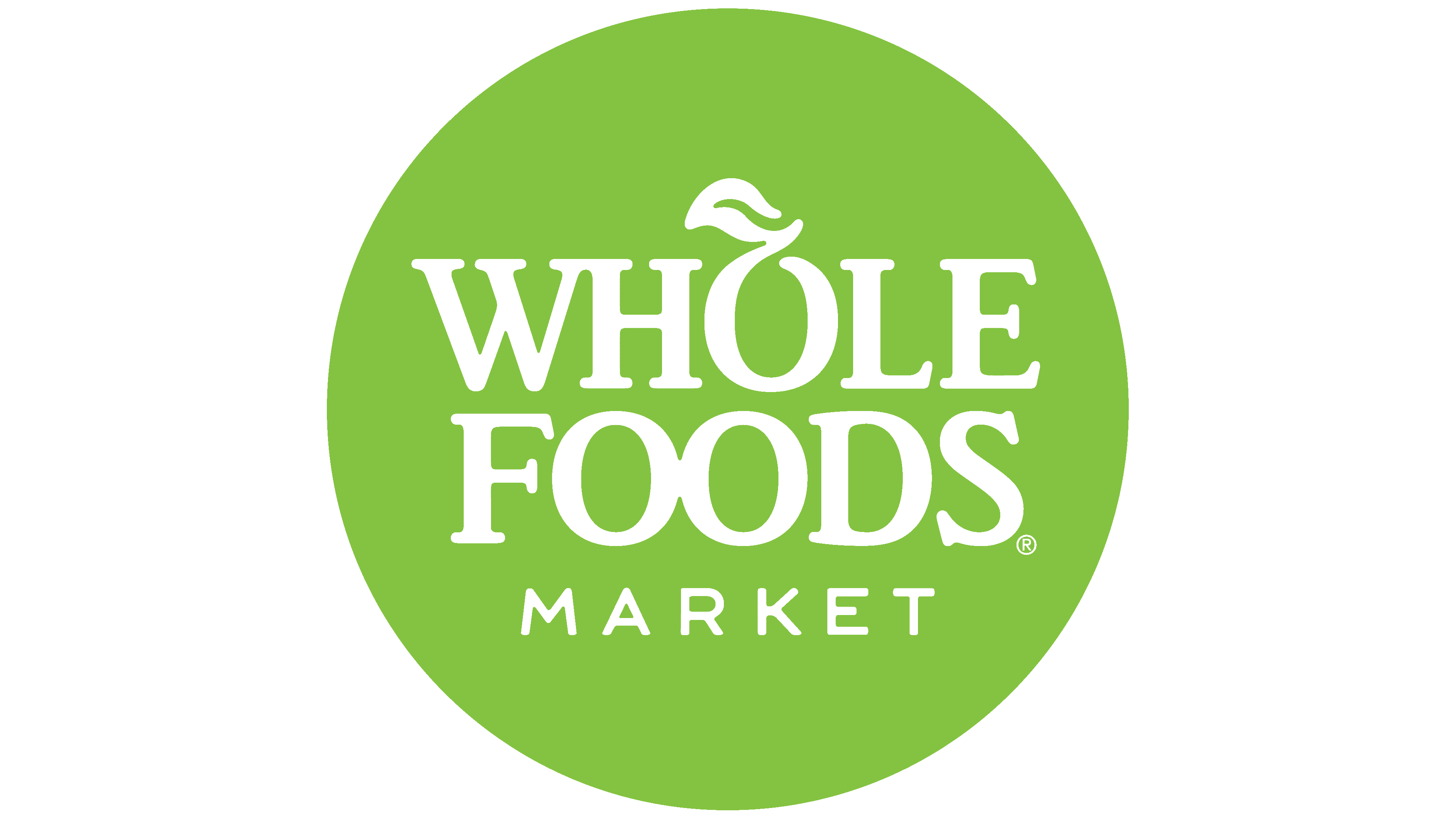Whole Foods Logo
Whole Foods Market, an American multinational, specializes in organic and natural foods. Founded in 1980, the chain has expanded its reach, catering primarily to health-conscious consumers in the U.S., Canada, and the U.K. In 2017, e-commerce giant Amazon acquired Whole Foods, integrating tech innovations and expanding its grocery delivery services. Whole Foods emphasizes sustainable farming, ethical sourcing, and eco-friendly practices, solidifying its reputation in the organic food sector. It continues to evolve under Amazon’s umbrella, merging retail and digital experiences.
Meaning and history
Whole Foods Market, rooted in Austin, Texas, began its journey in 1980 when John Mackey and Renee Lawson Hardy launched “SaferWay.” After merging with “Clarksville Natural Grocery,” Whole Foods Market was officially born. Gaining traction for its organic and natural products, the brand quickly expanded, setting a high bar in the grocery industry.
The 80s and 90s witnessed rapid expansion, with Whole Foods venturing beyond Texas. In 1992, it went public, fueling further growth and leading to several acquisitions, including Fresh Fields and Bread & Circus, enhancing its national presence.
The 2000s brought international exploration, with stores opening in Canada (2002) and the U.K. (2004). With its brand synonymous with quality, the company introduced stringent standards, ensuring GMO transparency, and sustainable seafood sourcing.
In 2017, a game-changing moment occurred when Amazon acquired Whole Foods for $13.7 billion. This union introduced innovations like Prime member discounts and advanced grocery delivery services.
Today, Whole Foods, under Amazon’s stewardship, seamlessly blends traditional retail with modern e-commerce, maintaining its commitment to organic integrity and sustainable practices.
1980 – 1984
1984 – 2016
Upon its inception, the grocery outlet introduced a unique emblem. It showcased its moniker in bold, uppercase letters, each adorned with prominent serifs, some straight like those on the “W” and “H”, while others took a slanted, edgy form. The title was distributed across three tiers: “Whole” on top, “Foods” centered, and “Market” at the base. In “Whole,” the letter “O” was enhanced with a curvy design, hinting at a plant’s stem or perhaps a fruit’s leaf. In “Foods,” the two “O”s were linked, setting them apart from the rest. For “Market,” its backdrop was an elongated rectangle boasting softened edges, adding depth to the overall design.
2016 – Today
Following a brand image revamp, the food retail chain updated its emblem. Creatives repositioned the text onto a singular horizontal alignment, encapsulated by a unified green-hued circle. The characters within were rendered in a pristine white shade. The leaf element was given sharper detailing. This transformation echoed the company’s commitment to freshness and organic offerings. Beyond this, the design remained consistent, highlighting the brand’s dedication to its core values and recognizable identity.














